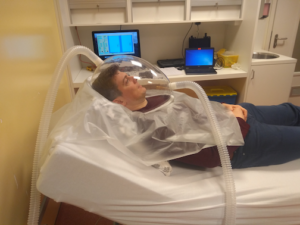
AMERICAN ASSOCIATION FOR THE ADVANCEMENT OF SCIENCE (AAAS)—Humans expend considerable energy while chewing, according to a new study that directly isolated and measured the metabolic costs of this behavior. Chewing gum elevated metabolic rate by 10 to 15 percent over basal metabolic rate, with the highest rate increases for stiffer gum bases, according to Adam van Casteren and colleagues. Their findings could shed light on how the energetic costs of chewing may have shaped musculoskeletal changes in the skull and jaw throughout human evolution. Researchers have assumed that many of these changes could have been related to differences in energy expenditure among species and through time, but such interpretation is complicated by the fact that little is known about the metabolic cost of modern human chewing. “The assumption generally was that the energy expended by the mastication system, the feeding system, in humans just wasn’t that much, and it was a little bit overlooked,” van Casteren said in a related podcast. “This is compounded also by the fact that, as weird modern humans, we eat cooked foods that we process with tools beforehand. So we don’t do as much chewing as our relatives and our ancient ancestors.” To gain a better understanding of these costs, van Casteren et al. had people chew an odorless, tasteless gum (to control for the metabolic costs of digestion and sensory stimuli) while measuring caloric expenditure and muscle activity in the masseter muscle, the main muscle of chewing. People chewing softer gum increased their energy expenditure by an average of 10.2 percent over their base rate, while those chewing stiffer gum had an average increase of 15.1 percent. Given this substantial energy expenditure in modern humans, the researchers suggest chewing might have had important metabolic costs that shaped hominin anatomy, before the advent of cooking and similar ways to process food before eating.
A related podcast, featuring an interview with lead author Adam van Casteren, will be available at https://science.org/podcasts on Thursday, August 18.
____________________________

The ventilated hood system at Maastricht University used to measure oxygen consumed and carbon dioxide produced during activities such as chewing. Dr Amanda Henry
____________________________
Article Source: AAAS news release.
*The cost of chewing: The energetics and evolutionary significance of mastication in humans, Science Advances, 17-Aug-2022. 10.1126/sciadv.abn8351
____________________________
Advertisement





